Bodies lay on the road and police ran for cover as killer stalked Hoddle St
THE police radio screams for ambulances as shots ring out. People hide behind fences, police run for cover. A body lies in the gutter like a ragdoll. This is Hoddle St as it happened.
Law & Order
Don't miss out on the headlines from Law & Order. Followed categories will be added to My News.
HE was one of the first journalists on the scene after Knight started shooting, and rookie reporter Brian Walsh hadn’t seen a dead body before. He saw plenty in Hoddle St.
After writing various articles for The Sun that night, Walsh, 21 at the time, wrote a more personal piece just for himself.
It was Walsh’s way of trying to make sense of the senseless.
His dramatic first-hand account has never been published — until now.
This below is what Walsh wrote the night after the Hoddle St mass murder.
WARNING: Distressing images
It was Sunday
The only difference to a normal Sunday was that I had scored the dreaded nightshift — the fate I had resigned myself to because as everyone kept telling me “it should be pretty quiet. Nothing much ever happens.”
After a day with friends I rocked into work at St Kilda Road.
Bruce Tobin and Tony Catalano, who was on his first day at police rounds, was in the office and after the usual pleasantries and chat about the party the night before, I did a ring around of the services.
WHY JULIAN KNIGHT MUST DIE IN JAIL
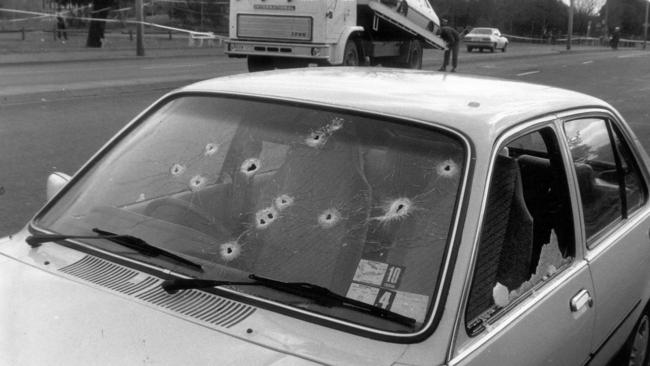
The three of us chatted away and in between conversations I completed the country ring-around — the check to see if anything spectacular happened in the bush that we hadn’t heard about through normal channels.
The net result of the ring-around was a double fatality (two road deaths in police rounds vernacular) near Shepparton. There were no details through so I made a mental note to call Shepparton police back later in the evening. A sub editor called. Tony did the fatals story but they wanted more. I rang Shep police. Tony filed a couple more paragraphs on a pedestrian death and we sat down to relax again.
HODDLE ST KILLER PENS LETTER FROM JAIL
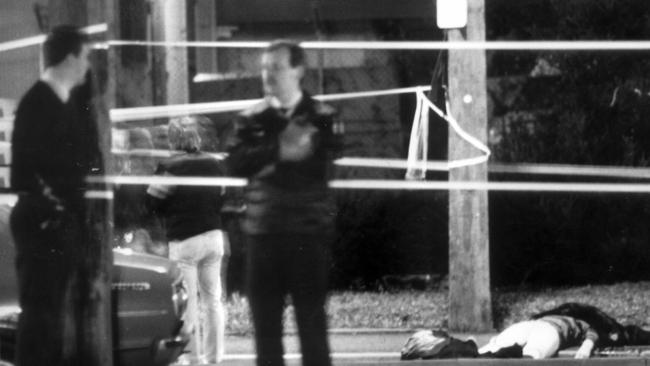
First thing on the agenda was the movie Risky Business. The three of us sat watching the film, listening to the scanner (a device used to monitor police and emergency radio messages).
About 9.30pm I gave Police Media Liaison a ring and arranged with Syd to let me into the St Kilda Road police complex.
I joked about Thursday night when I last saw Syd having a stubby with Sun journo Charlie Walker and then got down to the job of reading through the police telexes.
There was nothing of any great interest but I started taking notes on an armed robbery in an art studio.
I had jotted down only a few details in shorthand when my ears pricked up.
Over the scanner D-24 issued a job for “shots fired” in Hoddle St. My first reaction was that it was the same person who, a few weeks earlier, had fired shots at a couple of parked cars.
Fortunately and unfortunately, it was to be much worse than that.
I knew I had a story and I left Syd and Anne and ran back to 416 St Kilda Rd and into the office. I looked at the scanner and Bruce had also heard the call. As we started listening the Clifton Hill massacre, as it was later to be called, began to unfold.
Panic, breathless panic, screamed out over the scanner
The police unit which had answered the D-24 call for the “shots fired” job radioed in to call for an ambulance. Someone had been shot and had received minor injuries.
That was enough. It wasn’t too far away and represented a reasonable sort of yarn. Bruce asked me if I was going. I said “yes” but he said something like “don’t you want to hold on a minute?”
He was right. We didn’t really know what was going on but I grabbed a scanner and went to walk out. The time was closing on 9.55pm — almost 18 minutes after the first shot rang out.
Tony, who was on the 1-10pm shift asked if he could come.
I thought it was a fairly standard job but was glad for the company. Ten minutes later I would be even gladder he came along for the ride.
I forgot the car keys and bumped into Bruce as I ran back. I rang Pictorial and their night shift photographer, David Street, wasn’t in. He rang back about a minute later and I told him what was going on. We agreed to meet up there.
HODDLE ST: AS THE HORROR UNFOLDED
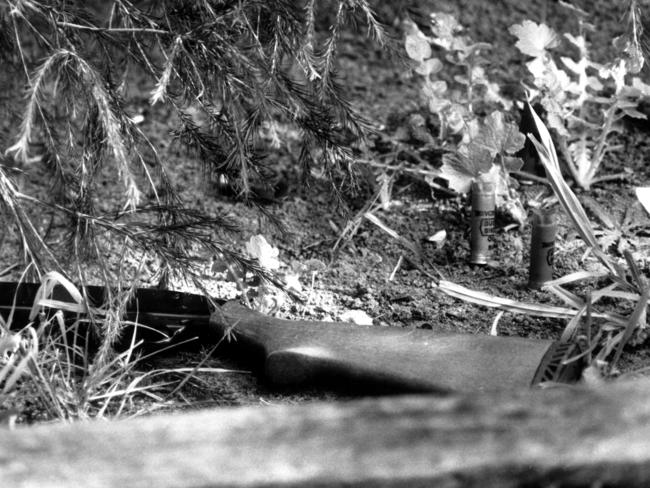
Tony and I walked down to the rounds truck. The silence was broken by a call on the scanner to send three ambulances. We looked at each other in disbelief and I revved the rounds truck into action.
After this point in time my mind went into overdrive. I was thinking without thinking, driven on by a mixture of fear and adrenaline.
I can’t even remember which way I drove to get to the scene. Police had blocked off traffic in Hoddle St and a call came over for units to block off Queens Parade.
Our first thoughts were to get around the police cordons. We had to. There was no sense in being a kilometre away from the action.
Further calls from police pinpointed where the shooting was. Panic, breathless panic, screamed out over the scanner. I thought the only way to get to the action — my only thought — to get in the middle of the action — was to go past my old house in Woodside St, North Fitzroy, and come up the Heidelberg Rd end of Hoddle St.
I didn’t and thank Christ to this minute that the thought of being blocked off at Rushall Crescent made me change my mind (Julian Knight fled that way and was later captured nearby).
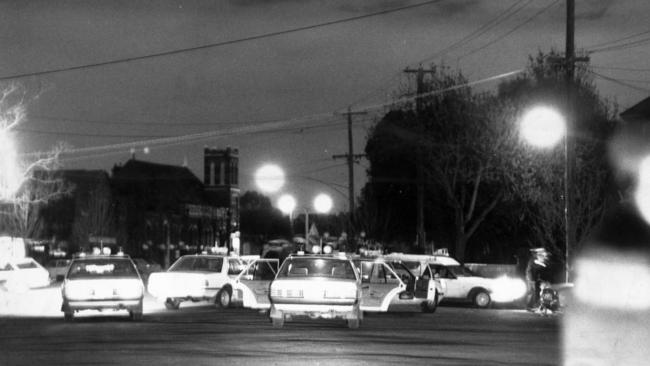
Everything became a blur.
Both of us muttered “f. k” as each further message over the scanner brought more horrors. My stomach was somewhere in my throat as the “shots fired” unfolded into a battleground.
The scanner screamed to send ten more ambulances and again we exchanged glances and had to push down the fear which rose again when a unit screamed that a man was walking towards them with a gun.
D24 called the unit which I think was Northcote 353. It came over again. “VKC to Northcote 353.” No answer. We didn’t have to say anything. We both thought the same. The units (officers) were dead. He’s killed two coppers. D24 called again. “VKC to Northcote 353.” No answer. “Any unit in the vicinity of High St check Northcote 353. Urgent.”
After what seemed an eternity a voice came over the scanner. “Northcote 353.” It was a relief but the feeling of “thank God” lasted only as long as the last message.
‘He’s shooting at anything that moves’
We drove up Queens Parade and drove into North Terrace. The two of us got out of the car and with something between a casual saunter and a slow jog, walked towards police.
The scene stared at us. Cars stopped along the road, police hiding behind cars, a figure on the footpath, more figures. People behind poles, behind trees, behind ambulances. People peering over fences.
We stood about 20 metres from the police. After a minute or so we walked down and joined the ambulance officers. Someone said to get out. Brian Shrowder from Channel Ten, who had joined us, said we were from the press. Someone replied “oh, that’s all right then.” It sounded as though it was all right if we died.
Four hours later I was to recall our stupidity. The gunman was still loose. Police thought there were two gunmen and there we were walking along as though we were arriving to cover a crime that had long since ended.
Tony kept the scanner going. The call came over — “We’ve got two 33s (police code for dead bodies) over here,” a copper said. I asked Tony “Did he say 33s? F. k there’s two people dead.” I think at that stage I radioed Chris Hornsey (The Sun night chief of staff) and told her there were two people dead.
The full story was to be tragically worse.
Over the radio came talk of the police helicopter being hit and then a unit called urgent before saying they had “one offender and one firearm.”
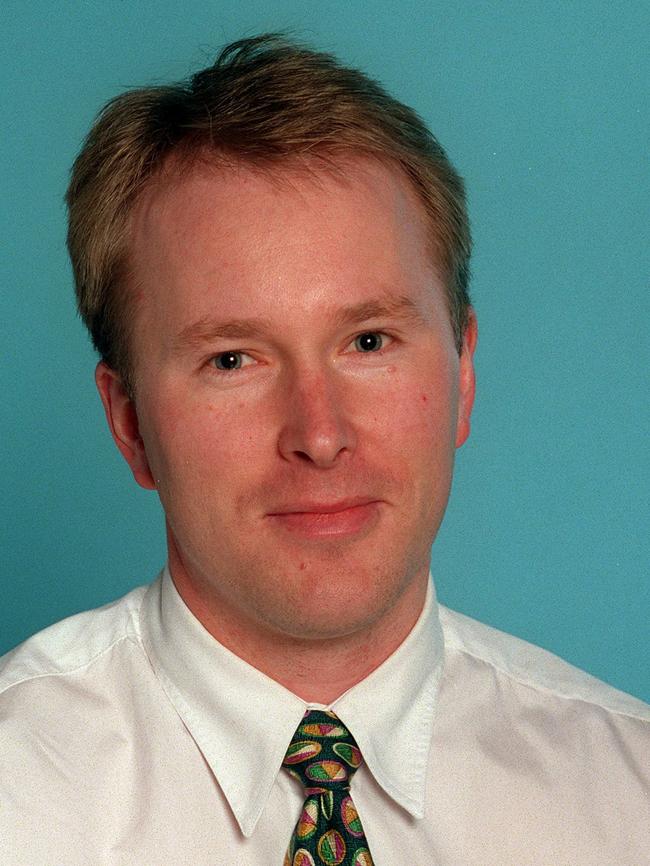
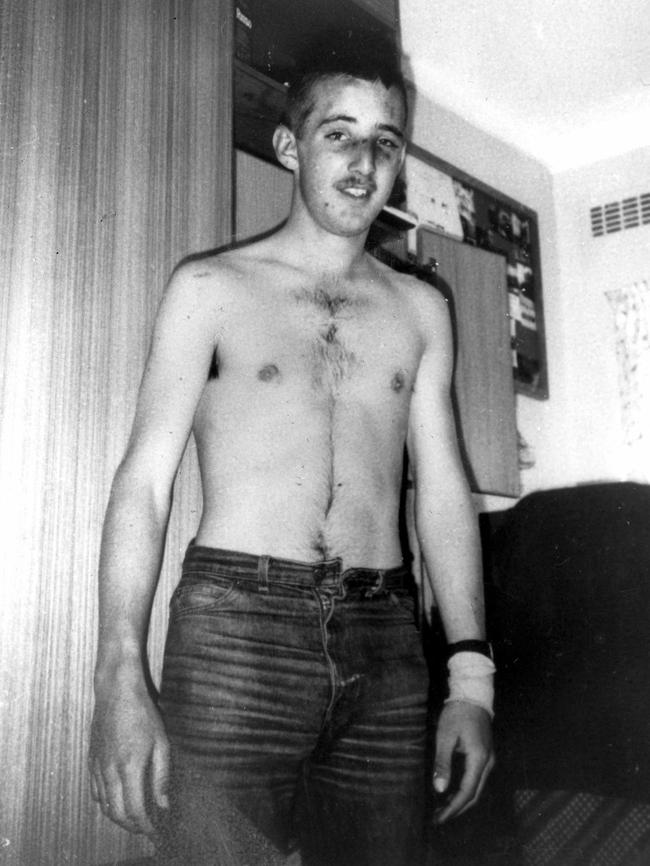
One down. Later it was to prove the only gunman, but everyone was still under the impression there were more.
While we stood behind an ambulance, police on the other side of the road started to move, darting from bush to bush, shooting out the lights of cars, pointing, running. Running so fast that fear could not have pushed their legs any faster.
A voice from behind said: “Where did you take Johnny? The guy that was shot in the neck. Which hospital? I want to ring his mum.”
Again my stupidity. “Hey mate, come out here (onto the street),” I asked him. He told me to come in and a gate opened to let me in. People spoke all at once. I spoke to the man and he said about Johnny (Muscat) rushing out. He turned and Johnny wasn’t there. He was hit. He later died.
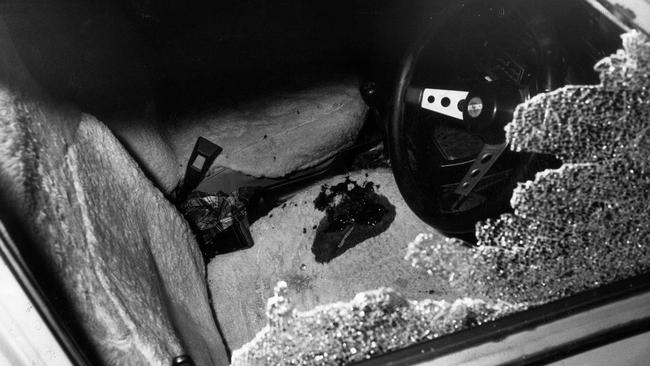
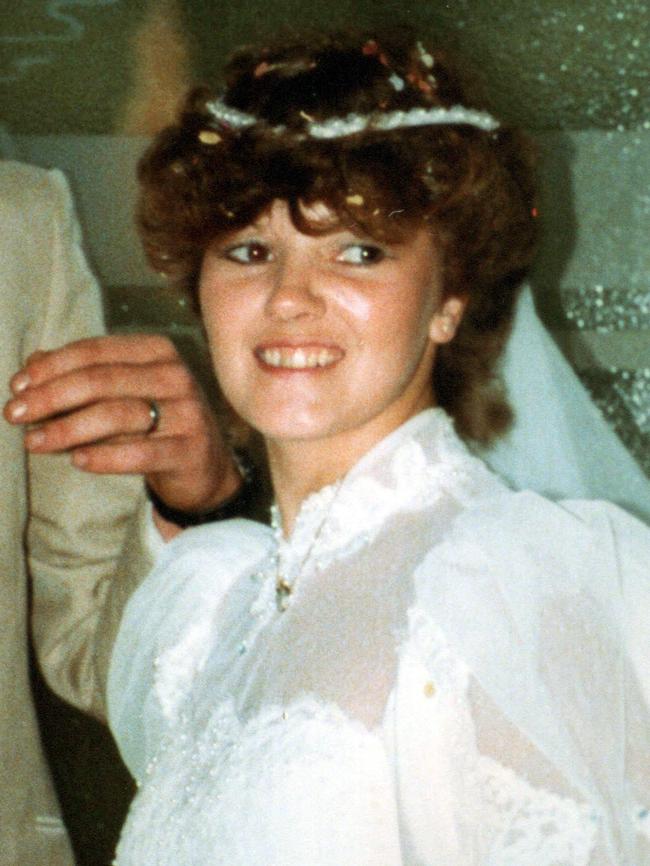
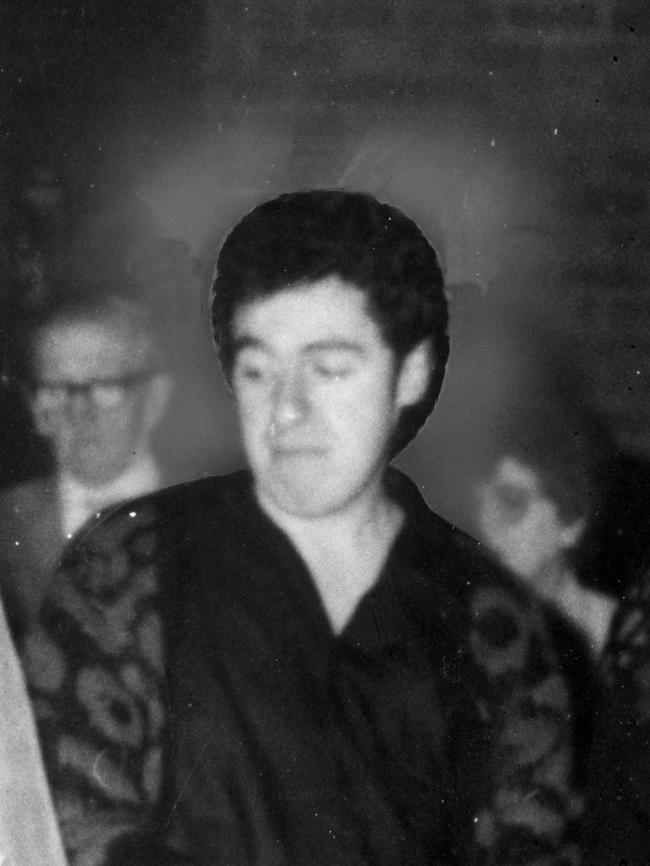
Another woman, voice slowed by shock, was there. She had been shot at when she went to help people she thought were road accident victims.
I collected her quotes in shorthand. I kept thinking this is unbelievable, but the enormity hadn’t sunk in. It started to shortly after.
I walked back outside and crouched behind an ambulance. A policewoman, trembling with fear and with tears that hadn’t had time to drop, crouched beside us. Shrowder comforted her, but she needed more than that.
“I have never seen anything like it,” the policewoman said.
“There are at least four people dead and others injured. We got here and had to hide behind a tree. He’s shooting at anything that moves. He’s shooting at police, shooting at ambulances, shooting at everyone.”
Pistol still in hand she crouched on her haunches and told anyone that was prepared to listen that she needed a drink.
Suddenly it hit me. The first wave of nausea started to waft up my throat and the fear returned.
I wanted to cry — for myself, the policewoman, for the poor bastards behind me who were still asking where Johnny was. For everyone. It shouldn’t be happening. It couldn’t be happening. It’s not real.
What can people say? Great story?
For what seemed the umpteenth time, I jumped on the radio (no mobile phones back then) and relayed to the office what was happening.
I didn’t know if it was after I did that or later that I noticed the dead bodies across the road.
The way one body appeared to melt into the gutter like a crumpled ragdoll.
A human body — dead — lying there. Not going anywhere. The sweat beneath my arms increased with the acknowledgment.

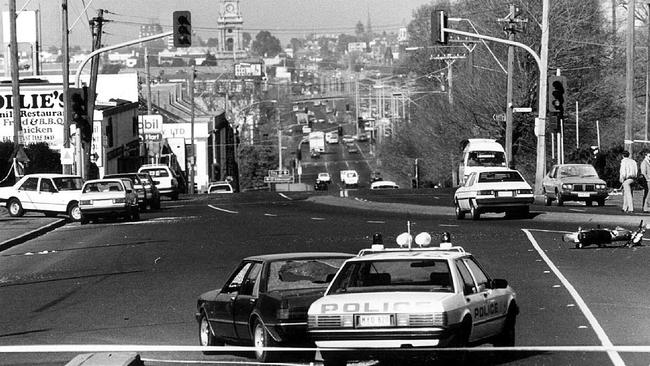
I can’t remembered when I filed (rang through my story). I can’t remember how many times (I filed extra copy) or when I discovered Peter Lalor (fellow Sun reporter) at the scene.
Slowly things filtered out. The number of dead bodies, number injured.
Police were still searching for a second man and even with the thought of renewed gunfire, police ran from tree to tree, car to car, letting out the distinctive white crime scene tape behind them.
The number of media increased. Police increased and then a press conference by Geoff Wilkinson (then Police Media Director) — five dead at least 11 injured.
One gunman, been drinking, recaptured. Like all of us, the strain was showing as he tried to make sense of the questions, of the carnage of the quiet Sunday night that had turned horribly sour.
I was still pumping, still sweating like a pig and still running.
Thinking of this angle. What have I done? What about this? Have we got her? In the end I was running in circles. Everything was a blur. Everything was f. ed. The whole goddamned f. ing world had crashed at my feet.
Eventually I spotted Jim (Tennison, Chief Police Reporter at The Sun). The world seemed a little bit better. I could not think. I tried to explain but I wasn’t sure what we had done.
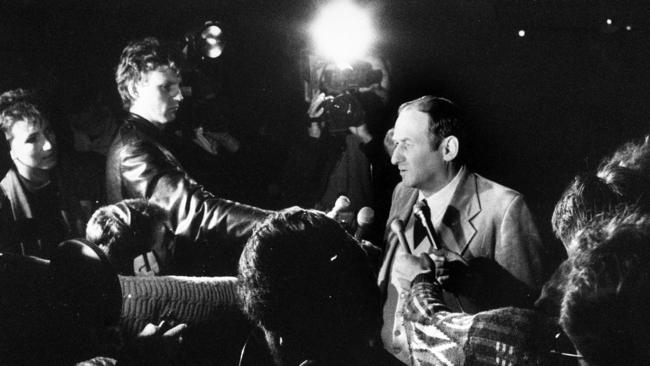
Another press conference. (Assistant Commissioner Vaughan Werner) Jim did it. What about this guy’s neighbours? We took off and knocked on doors looking for clues.
I did one. Peter (Lalor) did the next one. Then that guy. That strange guy. The one who said that he knew the gunman. He scared the sh.t out of us when he threw his hands out of his pockets, the one who made the fear return.
I thought he was a second gunman. He said he supplied the guns. He said he knew the bloke. A lot gelled. The guy was sus. Peter and Craig walked off. I stayed probably hoping for a confession, waiting for this bloke to tell me he knew why.
It didn’t come. I made an excuse and wandered off. We got back to the car and radioed in. The edition time was approaching. One had to stay. One had to get back. Peter stayed. I went in. I couldn’t think. I spewed out the story in dribs and drabs. “What about this strange guy. He reckons he’s a mate.” Not keen so I give residents’ stuff.
The subs finished editing the paper and there was an odd atmosphere. What can people say? Great story? Five people lying in cars and gutters — dead. Not for the five. Not for the one (later two) who died in hospital?

Every time I spoke I felt like crying. But we all compared notes, talked of the dead, the danger, the craziness, the not knowing.
I covered a story that is probably the biggest Melbourne has seen for a long, long while. But what do I do? Thank the dead for providing me with the yarn?
I smoke anxiously as the subs fight to get the paper out. I too want to get out.
I remember the Ages (our job was to pick up the first editions of the opposing paper) and myself and the Cat (Tony Catalano) jump in the car and go down to get them.
It takes a while but gets us out of there while all the bullsh.t is happening.
We sit down have a beer and tell each other what we already know. Like the policewoman, we have to talk. We don’t want to go home. Eventually all The Herald (The Sun was the morning paper and The Herald the afternoon paper, they later merged to form the Herald Sun) people wander in and we do.

I drop Peter off. Then Tony. Then me. I walk in (to Police Rounds) and Homicide has just called for the Government undertaker.
It’s about 6am. I am tired but I don’t want to go to sleep. I drive down Hoddle St. The blue lights are still flashing as I turn to go down the freeway towards home.
For me the night is over and I try and get home (Diamond Creek) before the sun rises.
I don’t want to greet the new day. The dark hides the death, the blood and the gore. As I drive between Greensborough and Diamond Creek the sky becomes a radiant blue. It looks as though it will be a beautiful day.
How wrong? The day should be dark like the night which will linger on in my memory for as long as I live.
In time I will forget the horror, the fear, the blood, the bravery. Some will never forget.
That snivelling little (expletive) stained them for life. He made sure that the families of the people he murdered and injured will be scarred just as if they had been shot themselves on August 9.
Front page story or not, Julian Knight rot in hell. That’s where you belong.
— Brian Walsh was a reporter at The Sun.
